There are many instances where water and construction don’t mix. In the wrong places, like accidentally sealed into walls, moisture can create serious structural problems and even health issues, such as allergic reactions to mold in walls. Vapor barriers – and the vapor barrier tapes and sealants that help to secure different barrier and insulation methods – are key to helping prevent moisture-related mishaps and ensure the integrity of projects and structures in every climate.

What is vapor barrier tape?
Vapor barrier tape (also known as vapor bond tape) is crucial in creating a vapor barrier seal. Vapor barrier tape is usually a sufficient vapor barrier and, in those instances it isn’t, the right tape is key to the success of the of whatever moisture-proofing method a project calls for. Polyethylene sealing tape, fiberglass cloth tape, insulation seaming tape, and fiberglass insulation tape are all examples of vapor barrier tapes that make insulation successful and create effective moisture barriers.
Why use vapor barriers and vapor barrier tape?
Moisture resistance and protection
As the name suggests, vapor barriers are effective at creating moisture barriers and protecting parts of a home or office project from the damaging effects of unwanted moisture. Water vapor can pass through building materials in several ways including direct transmission, but most moisture comes in through walls from air gaps, cracks, and electrical outlets and fixtures.
Installing vapor barriers on wall surfaces is important to prevent moisture transfer and should always include sealing air gaps in walls, ceilings, and floor surfaces. Ultimately, the goal of vapor barrier strategies and sealing tapes is to prevent moisture from collecting and corrupting building materials and be less susceptible to long-term moisture problems. Vapor barriers are the key to keeping moisture from where it doesn’t belong to prevent warping, mold, and other problems. Vapor bond tape is essential in creating the most effective vapor barriers.
Energy savings
Alternately, vapor barrier tape is an effective way to minimize heat transference and energy loss, which reduces energy costs. Used correctly, vapor barrier tape can minimize heat loss through walls, ceilings, and floors.
When do you really need vapor barriers or vapor bond tape?
Vapor barrier tape is widely agreed upon as necessary in certain conditions, but not as a whole-house solution in every situation. Most experts recommend that vapor barriers are best used in certain conditions and that the vapor barriers used should fit the climate, region, plus the type of wall construction.
Most homes in humid southern climates have different vapor barrier needs or conditions than wood-sided houses in cooler, dryer climates. For example, the recommended vapor barrier in a home or office in a humid southern climate built with brick varies greatly from creating a vapor barrier in a cold climate in a home built with wood siding. It’s important to always refer to current local code recommendations when deciding if and how to install vapor barriers.
The most commonly recommended situations for vapor barriers include the following:
- High humidity spaces like greenhouses areas with spas or swimming pools, and bathrooms should have vapor barrier protection to protect moisture damage in the rest of the home.
- Homes in very hot and humid climates may benefit from an exterior vapor barrier that keeps outside humidity from penetrating into the interior walls.
- In extremely cold climates, polyethylene plastic vapor barriers between insulation and interior wallboard can help prevent any moisture from condensation from entering and damaging the wall cavity.
- Homes with below-grade spaces walls and floor slabs transmit ground moisture through concrete walls or slabs. A vapor barrier against the concrete surface is generally recommended before wood framing or flooring materials are installed.
- Houses with basement crawl spaces benefit from a polyethylene moisture barrier placed directly over the exposed earth.
What makes a good vapor bond tape?
Not all vapor barriers are created equal – different materials make sense in different situations and for different projects. When it comes to vapor bond tape, there’s a few things to pay attention to make sure that it delivers on what you need for the best protection possible.
- Use the right tape for the job. You want to make sure the tape you’re using is designed for use with the vapor barrier method or material you’re using. Make sure your vapor bond tape is rated for use with whatever insulation material it’s paired with.
- Adhesion. For tape, this is a critical capability. While you don’t want tape so sticky that it’s impossible to work with, you do want to ensure the tape will stick in any weather or temperature and won’t lose its adhesion over time. Make sure you’re using tape that’s been tested for performance in the environment it will be used in.
- Split-ability. Likewise, you want tape that’s easy to cut or split for application but that won’t tear by accident and ruin the moisture-resistant capabilities.
- Flexibility. Tape needs to be flexible to use and create seals wherever there’s a need, but it also needs to be rigid enough to hold up to the needs of the project.

Vapor barrier tape tips and tricks
For your best, most effective vapor tape usage experience, focus on a few things:
- Don’t skimp on quality. Whether you’re paying for a contractor or DIYing your project, it’s likely you’re investing money and it’s worth paying for higher-end supplies to ensure the job is completed effectively, especially if it helps to avoid expensive problems down the line.
- Apply correctly. Application is key. For the most long-lasting, effective seal, it’s important to pay attention to application. Creating as smooth a seal as possible is key – many professionals suggest using a squeegee instead of hands to apply vapor tape, and to not adhere with anything like staples or nails whenever possible.
- Monitor and maintain. Overall, vapor tape is a small investment that can make a huge difference. Paying attention to it over time can keep your vapor barrier working effectively and maintain a safe, moisture-free environment.

Tips for Installing Vapor Barriers
If your project warrants vapor barriers, here are some things to keep in mind to get the most of your vapor barrier method and vapor bond tape:
- Don’t use complete vapor barriers in homes that don’t have proper ventilation. Modern homes or offices that are often tightly sealed in order to maintain energy-efficiency should have methods of ensuring a good exchange of fresh air.
- Avoid impermeable vapor barriers like glass, sheet metal, polyethylene sheets, or rubber membrane where semi-permeable or permeable vapor barrier materials will work. Construction methods that allow interior wall materials to dry out are better than methods that prevent any moisture from entering. It’s also best to avoid impermeable barriers like polyethylene or vinyl wall coverings in air-conditioned spaces, as this can lead to mold growth and other air quality problems.
- Install vapor barriers on the side of the wall that experiences the hotter temperature and wetter conditions. Avoid installing them on both sides of a structure; spaces should have the ability to dry out in one direction when the other side is built to prevent moisture penetration.
- Use the right vapor barrier or sealing tape to completely block air gaps and create the most efficient moisture barrier.
Vapor barriers and vapor bond tape aren’t a requirement in every project, but they can make a significant impact in preventing moisture-related damage. Installing a high-quality vapor barrier and pairing it with the right vapor tape is an easy and cost-effective way to protect your spaces from moisture keep surfaces and spaces safe from damage, mold, mildew, and more.
Got more questions about basic (and not so basic) household commodities? Check out the resources page on our blog to learn! To see what we’re up to, follow us on Twitter, Facebook, and Instagram. And, as always, feel free to reach out with any questions or comments– Larry loves to hear from you!
 For more informative articles about office supplies, subscribe to our email newsletter!
For more informative articles about office supplies, subscribe to our email newsletter!
Never fear, you won't begin receiving daily sales emails that belong in a spam folder. Instead, we promise a fun weekly roundup of our latest blog posts and great finds from across the web. And if you lose interest, it's always easy to unsubscribe with a single click.




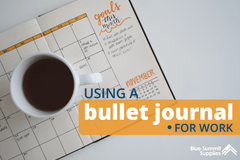


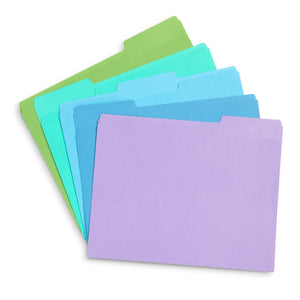
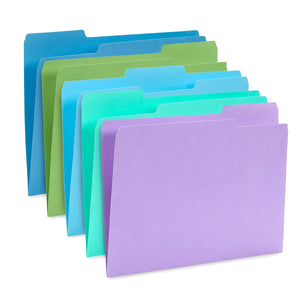
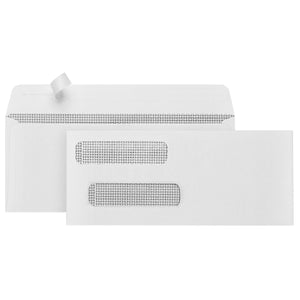
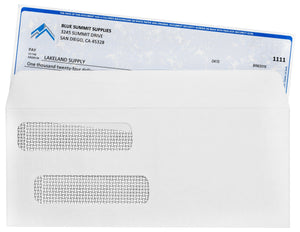
2 comments
Justine
Hi Patrick,
Vapor Barrier Tape is a semi-permanent adhesive made for sealing houses and boats. If you are looking for tape will go over paint, I suggest Painters Tape. See the link below:
https://www.bluesummitsupplies.com/products/blue-tape-6pack-405?pos=2&_sid=af3bd2989&ss=r
Patrick F Noone
Was wondering what is the best way to remove your pe 9mm vapor barrior tape off painted surfaces